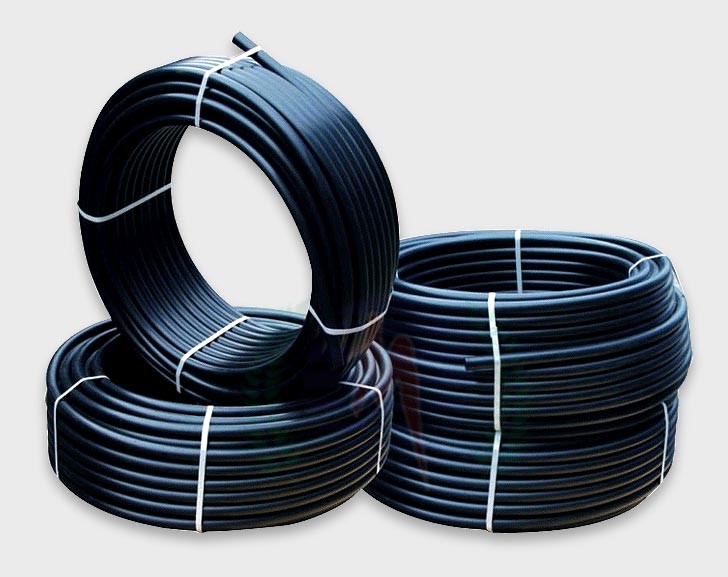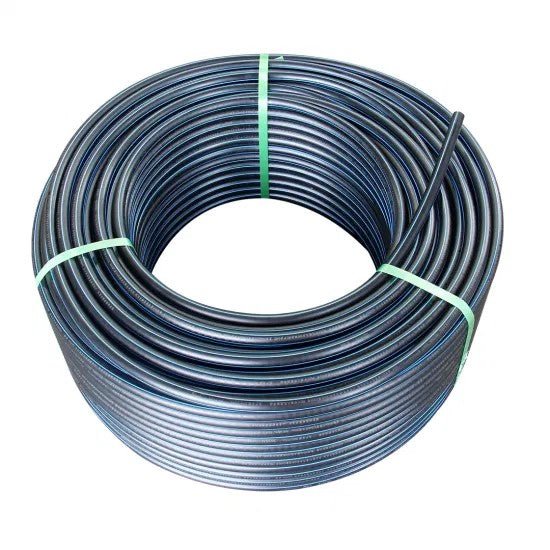How American Plastics HDPE Pipe for Oilfield Supports Oilfield Operations
Wiki Article
Understanding the Key Advantages of HDPE Pipe for Water and Wastewater Management
Making use of HDPE pipe in water and wastewater management provides many advantages that merit consideration. Its extraordinary resilience and lengthy life expectancy make it a favored option for lots of jobs. Furthermore, the product's resistance to deterioration and chemical damages improves its dependability in various environments. The benefits extend past simply durability and resistance. hdpe pipe suppliers Midland TX. Exploring its cost-effectiveness and ecological effect reveals a lot more compelling reasons for its extensive adoption in modern-day infrastructureRemarkable Durability and Longevity

HDPE pipe attracts attention for its outstanding sturdiness and long life, making it a preferred choice in water management systems. Created from high-density polyethylene, these pipelines can endure substantial stress and stress, making certain reputable efficiency with time. Their robust nature allows them to withstand extreme environmental conditions, consisting of temperature level fluctuations and soil motions, which can trigger various other products to fail.
The lifespan of HDPE pipes commonly goes beyond 50 years, giving a cost-efficient service for towns and markets alike. Furthermore, the product's lightweight residential properties streamline setup, lowering labor prices and durations. This longevity lessens the demand for regular repair services or substitutes, additionally improving its economic appeal.
In water management applications, the reliability of HDPE pipelines means less disruptions and improved service continuity, making them integral to lasting facilities advancement. The combination of toughness and durability solidifies HDPE's duty as a keystone in efficient water management solutions.

Resistance to Rust and Chemical Damage
While many products catch deterioration and chemical damage with time, HDPE pipes show exceptional resistance, making them perfect for numerous water administration applications. This strength comes from the molecular framework of high-density polyethylene, which is inherently non-reactive and does not rust like metals or weaken from exposure to rough chemicals. As a result, HDPE is highly reliable in environments with hostile materials, such as wastewater systems that may include acids, bases, and natural solvents.
Furthermore, HDPE pipelines can hold up against environmental factors such as soil acidity and saline problems, additionally enhancing their viability for diverse applications (hdpe pipe suppliers Midland TX). Their ability to preserve structural stability with time lowers the risk of leaks and failures, which is critical in making sure the safety and reliability of water distribution and wastewater monitoring systems. Consequently, the resistance to rust and chemical damage markedly contributes to the total effectiveness and durability of HDPE piping solutions
Cost-Effectiveness and Economic Advantages
When thinking about the economic implications of water monitoring systems, the cost-effectiveness of HDPE pipelines comes to be noticeable. These pipelines use lower installation and upkeep expenses contrasted to standard materials like metal or concrete. Their light-weight nature streamlines transportation and installment, causing minimized labor expenses. Furthermore, HDPE pipes show a long life-span, often exceeding half a century, which converts to fewer substitutes and lasting cost savings.Additionally, the resistance of HDPE to rust and chemical damage decreases the demand for costly repairs and substitutes. The pipelines likewise support reliable water circulation, minimizing energy expenses connected with pumping systems. By mitigating leaks and water loss, HDPE pipes add to significant financial benefits for towns and industries alike. On the whole, the initial investment in HDPE piping can produce substantial monetary returns over the lifespan of the water monitoring system, making it a prudent choice for lasting infrastructure development.
Environmental Sustainability and Minimized Effect

Convenience and Flexibility in Installment
As a result of their unique buildings, HDPE pipes use impressive flexibility and versatility in setup, making them appropriate for a wide variety of applications. Their lightweight nature enables much easier handling and transport, decreasing labor expenses and installation time. HDPE pipelines can be curved and formed to fit numerous surfaces and task demands, which is specifically advantageous in testing atmospheres.Furthermore, their resistance to corrosion and chemical damage enables setup in varied settings without the need for specialized safety coatings. The capability to fuse joints creates a continual, leak-free system, boosting the total honesty and dependability of the installation. HDPE's adaptability additionally suits ground movement, minimizing the risk of damages in areas prone to changing dirt. Overall, these attributes make HDPE pipelines not only flexible however likewise a favored choice for water and wastewater management systems.
Frequently Asked Questions
Just How Does HDPE Pipe Contrast to PVC in Water Management Applications?
HDPE pipe supplies exceptional versatility, resistance to rust, and resilience contrasted to PVC. Its lighter weight helps with much easier installment, while its bronze pipe long life-span reduces substitute expenses, making HDPE a preferred option in water monitoring applications.What Is the Life Expectancy of HDPE Piping Under Regular Conditions?
Under regular problems, HDPE pipes can have a life-span varying from 50 to 100 years. Their toughness and resistance to deterioration add to their long-term efficiency in numerous applications, making them a reputable option for infrastructure.Are HDPE Piping Recyclable After Their Life Span?
Yes, HDPE pipes are recyclable after their solution life. Texas hdpe pipe manufacturer. They can be refined and repurposed right into brand-new products, greatly decreasing environmental influence and promoting sustainability within the sector, making them an environmentally friendly option for piping servicesWhat Is the Installation Process for HDPE Pipeline?
The setup procedure for HDPE pipelines includes site prep work, trenching, pipeline fusion or mechanical joining, backfilling, and pressure testing. Appropriate strategies guarantee a long lasting and efficient system for transferring water and wastewater properly.Can HDPE Pipeline Be Used for Both Potable and Non-Potable Water Solutions?
Yes, HDPE pipelines can be made use of for both safe and clean and non-potable water systems. Their versatility, durability, and resistance to rust make them ideal for numerous applications, making certain safe and effective transport of water in various contexts.Report this wiki page